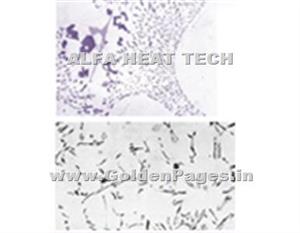ALFA HEAT TECH
Featured Products
Highest quality standards are achieved through the implementations of latest technology, decades of experience and everlasting moral values , which have helped us to retain our customers as well as multiply them.
Welcome to ALFA HEAT TECH
Gas Carbonitriding Liquid

Gas carbonitriding is similar to carburizing, except that small additions of nitrogen are added to the atmosphere and the temperature is slightly lower. Consequently, the case depth and therefore, the load carrying capability is not as high as with carburizing, but the wear resistance and dimensional control are often superior.
Carbonitriding has the further advantage that it can be performed on unalloyed steels, so that it can be used for small stampings or other types of machined parts to make a strong, wear resistant part economically.
Liquid Carbonitriding

Liquid carbonitriding is the process of diffusion enrichment of the surface layer of a part with carbon and nitrogen provided by a molten salt.The process is carried out at the temperatures 820-860°C
Carbonitriding is used primarily to impart a hard, wear-resistant case, generally from 0.075 to 0.75 mm deep. A carbonitrided case has better hardenability than a carburized case (nitrogen increases the hardenability of steel; it is also an austenite stabilizer, and high nitrogen levels can result in retained austenite, particularly in alloy steels).
Consequently, by carbonitriding and quenching, a hardened case can be produced at less expense within the case-depth range indicated, using either carbon or low-alloy steel. Full hardness with less distortion can be achieved with oil quenching, or, in some instances, even gas quenching, employing a protective atmosphere as the quenching medium.
Copper Heat Treatment Services

We are a coveted organization that is engaged in offering Copper Heat Treatment Services to customers. Our professionals work in close proximity with customers to render these services as per their choices and preferences. Furthermore, our quality controllers stringently check the entire treatment process on different parameters to ensure about flawlessness.
Aluminum Heat Treatment Services

We are engaged in undertaking Aluminum Heat Treatment Services for our clients. Heat Treatment of aluminum alloys, employed to increase strength and hardness of the precipitation-hardenable wrought and cast alloys by Solutionising and Precipitation Hardening. These usually are referred to as the "heat-treatable" alloys to distinguish them from those alloys in which no significant strengthening can be achieved by heating and cooling. The latter, generally referred to as "non-heat-treatable" alloys, depend primarily on cold work to increase strength. Heating to decrease strength and increase ductility (annealing) is used with alloys of both types; metallurgical reactions may vary with type of alloy and with degree of softening desired. Except for the low-temperature stabilization treatment. We use technologically advanced furnaces while executing this job work.
Hardening And Tempering

Martensitic or quench hardening, neutral hardening is a heat treatment used to achieve high hardness / strength on steel. It consists of austenitising, quenching and tempering, in order to retain a tempered martensite or bainite structure.teel can be treated by intense heat to give it different properties of hardness and softness. This depends on the amount of carbon in the steel (only high carbon steel can be hardened and tempered). Tempering is a low temperature (150°C to 650°C) heat treatment intended to remove the stresses and brittleness caused by quenching and to develop the required mechanical properties.
Our Vision
* To embrace new technologies and methods. * To give unsurpassed products and services to the clients. * To constantly look for improvement and changes.






 29960.jpg)

 29962.jpg)

